
Frost and Succulents: What You Need to Know
Depending on how long temps stay below freezing (32 degrees F), "frost tender" succulents may show varying degrees of damage. When moisture in the cells of a vulnerable plant freezes, it expands, bursts cell walls, and turns leaves to mush. In a "light frost," leaf tips alone may show damage ("frost burn"). In a "hard frost," temps stay below freezing for hours, which can collapse entire plants. Succulents typically don't regenerate from roots.
Crassulas, aeoniums, euphorbias, and kalanchoes are among the most tender succulents. A few succulents have a built-in antifreeze that enables them to survive temperatures well below 32 degrees F---below zero, in fact.
Should you be worried about your outdoor succulents in winter? It depends on where you live. GO TO: "Cold Weather Care for Outdoor Succulents, By Region."
Your area is frost-free (lucky you!) if...
Agave attenuata grows in gardens, and the plants look like this year-round.
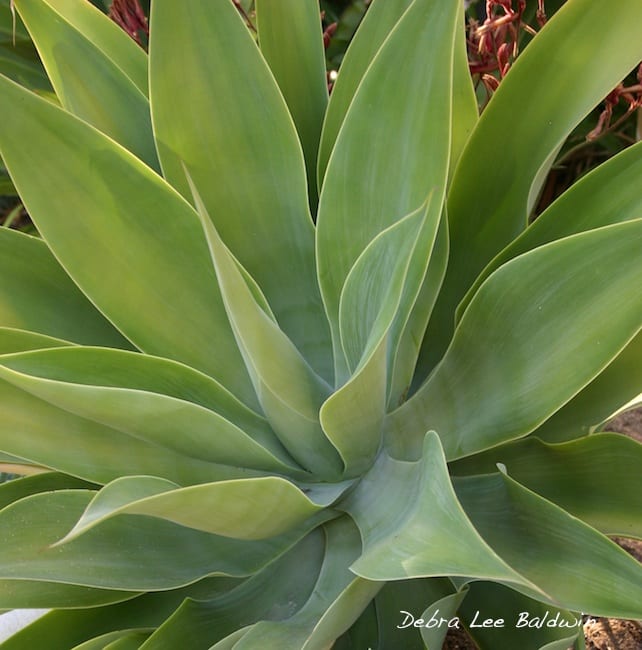
Agave attenuata is the first succulent to show damage from frost in winter.
In my garden, this soft-leaved agave is the canary in the mineshaft where cold is concerned. A lot of succulents breeze through a brief frost (less than an hour), but leaf tips of Agave attenuata show damage right away.
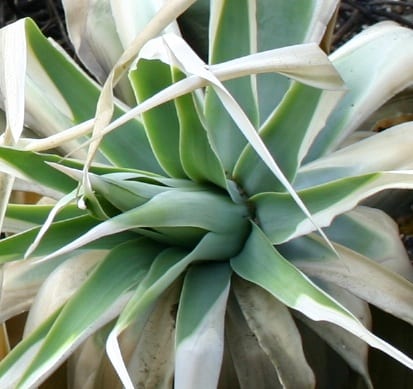
After a brief exposure to 32 degrees, Agave attenuata will look like this.
Such damage is unsightly but seldom fatal. See the healthy green part of each leaf? Use scissors to trim off the tissue-paper-like frozen tips [see how], cutting each leaf to a point. When you're done, the damage will be barely noticeable. By summer new growth will have hidden those shorter, trimmed leaves. (Note: Such damage is similar to scorching caused by too much sun and heat, typical of desert climates, and by---believe it or not---wildfire.)
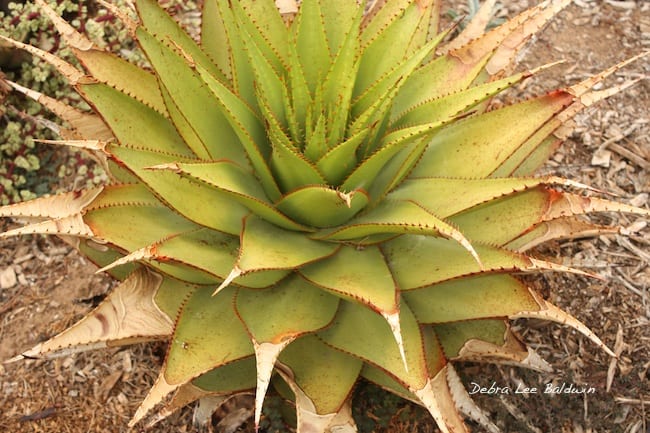
What about an agave or other succulent that has frost damage only on its leaf tips? Don't bother to trim them. It'll lose those oldest leaves in a few months anyway.
Areas of occasional, mild frosts (like inland Southern CA):
Watch the weather forecast, and if there's a "frost advisory" for your area, before dark go outside and cover your tender succulents. Frost tends to happen after midnight, with temps getting colder toward dawn. Cold air is heavier than warm, and flows down slopes and collects in low spots. Consequently, succulents in swales are more at risk than those atop berms. You may have heard that Christmas lights raise the temperature a few degrees. Yes, if they're the old-fashioned kind. Those sold nowadays (LEDs) don't generate heat. The succulents you have to worry about are those out in the open, with nothing above them. I sometimes stand over a succulent and gaze upward. If there are no tree limbs or eaves directly overhead, it gets draped.
I live in the foothills NE of San Diego at 1,500 feet (Zone 9b). And yes, I've been outdoors in my pajamas and slippers at 11 pm after hearing the weather forecast on the late-night news, shivering as I throw sheets on vulnerable plants, while my husband holds a flashlight. If frost is predicted for a series of nights, I may leave the plants covered; otherwise, I remove the sheets the next morning. To make sure they won't blow off, I secure them with clothes pins and rocks. Do NOT use plastic. It doesn't allow the plants to breathe.
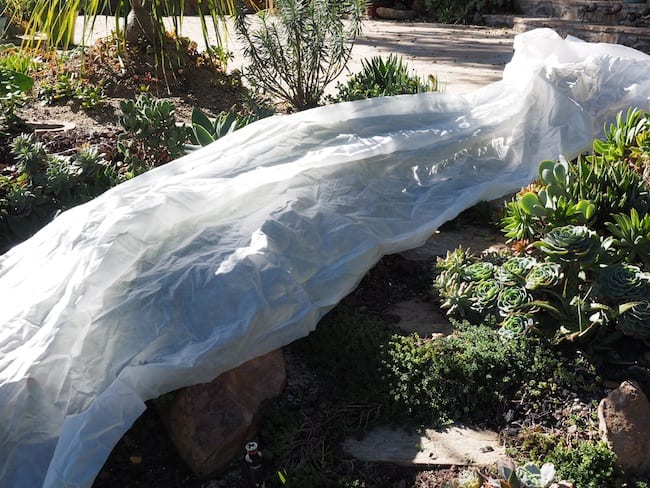
Frost cloth protects jades and other vulnerable succulents in my garden. SEE THE VIDEO.
Why cold damages some succulents and not others
A lot has to do with where a particular kind of plant originated. Succulents, which store water in their leaves to survive drought, are mostly from dry, hot climates. But some are from dry, cold climates---and those are the ones that don't freeze. See my article in the Wall Street Journal: Showy Succulents for Snowy Climates. Among the "hardies" are:
Stonecrops (small-leaved sedums):
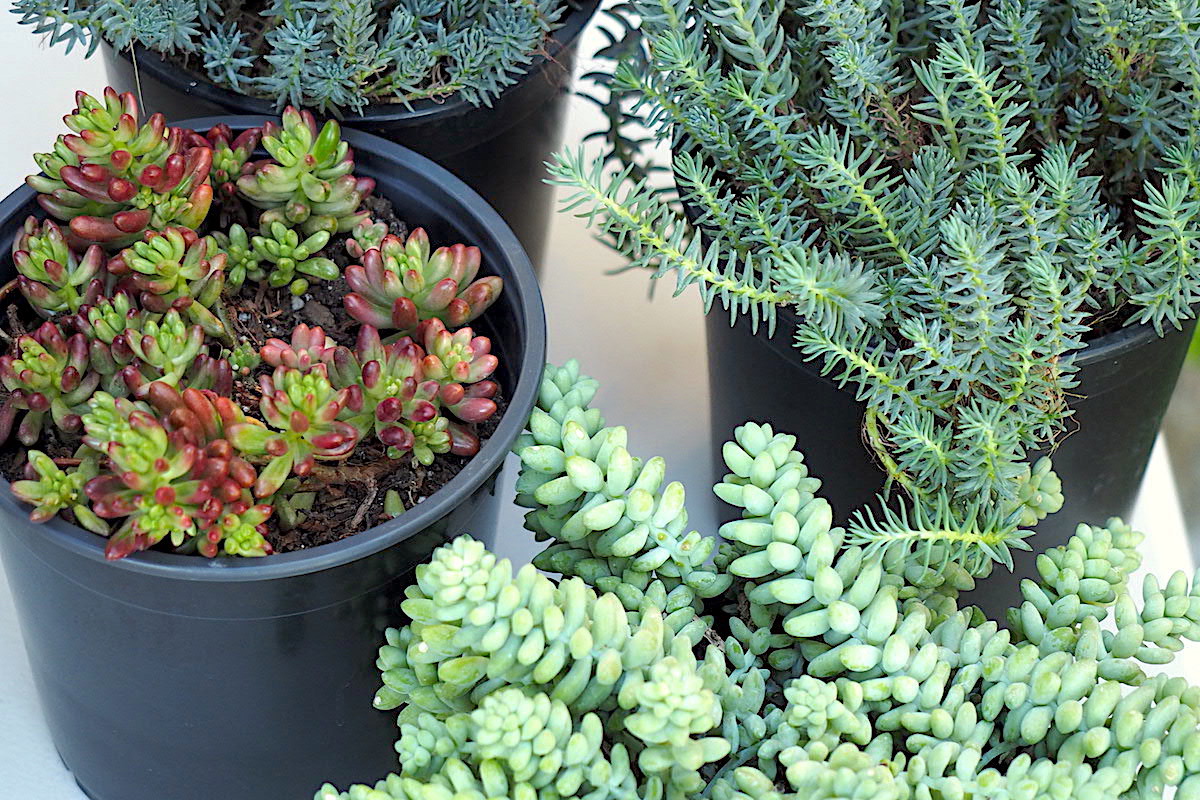
The smaller a sedum's leaves, the more resistant to frost. Top right: Sedum 'Blue Spruce', Lower right: Sedum morganianum (burro tail), Left: Sedum rubrotinctum
Also hardy are sempervivums (hens-and-chicks) of which there are numerous species and cultivars; certain cacti, yuccas and agaves (like Agave utahensis, A. montana and A. parryi), and lewisias from the Pacific Northwest.
Learn more in my books
Designing with Succulents (2nd ed.):
— Cold-Climate Succulent Gardens, pp. 111-113
— Cultivating Succulents in Challenging Climates, pp. 143-148
Succulents Simplified:
-- Protection from Frost, pp. 48-50
-- Frost Damage, p. 72 and p. 77
Also: Hardy Succulents, by Gwen Kelaidis, illustrated by Saxon Holt (affiliate link):
Related Info on this Site:
Cold Weather Care for Outdoor Succulents, By Region
Cold Weather Care for Outdoor Succulents, By Region Should you be worried about your outdoor succulents in winter? It depends on where you live. It’s all about frost. The temperature at which water freezes (32 degrees F) is the Great Divide. Above that, most succulents are fine. Below that, most are at risk. See “Frost and…
Four Ways to Overwinter Succulents
These four ways to overwinter succulents give you several options, depending on how cold it gets where you live. Most varieties can’t handle temps below 32 degrees F. These common winter conditions can lead to damage or death for dormant (not actively growing) succulents: — soggy soil (causes roots to rot) — excess rainfall (engorges…



